Cape Hatteras Lighthouse: A Historic Restoration Underway
There is perhaps no lighthouse in the United States as iconic as the Hatteras Lighthouse. Soaring 198 feet above the Atlantic, it has warned mariners of the dangers of Diamond Shoals since 1870.
In its lifetime, it has been moved—2900 feet in 1999 to save it from the sea—cleaned and repainted too many times to count; it has weathered hurricanes and nor’easters, and always the light continued to shine. But the one thing that Hatteras Lighthouse has never experienced is a complete renovation. Not once in 124 years.
Until now.
Which is why it will be closed until the summer of 2025.
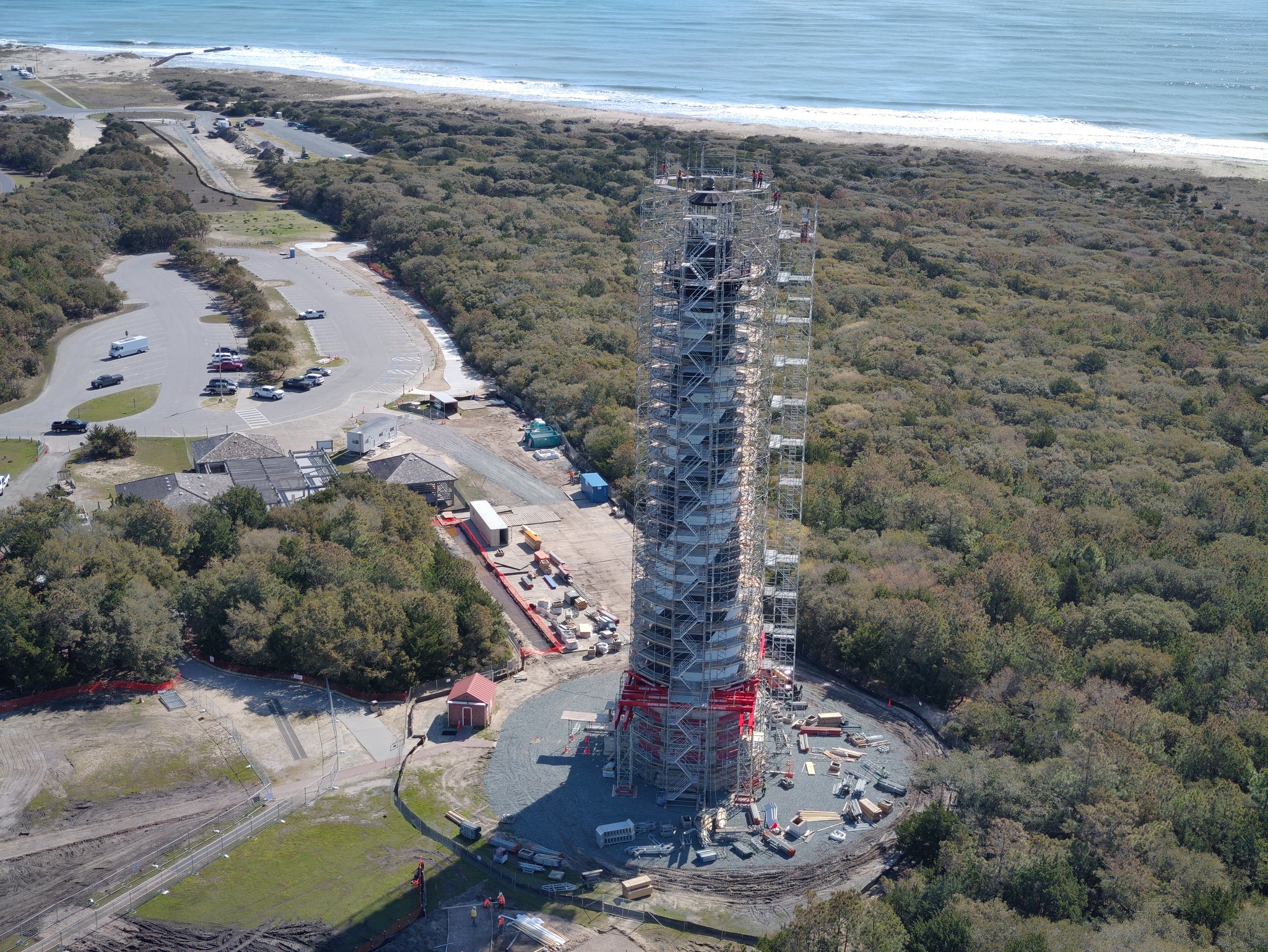
The amazing thing is how well it has held up over the years—but it does need work so that it will live another 124 years and hopefully longer. And the National Park Service is investing $19.2 million to make sure it does live for another 124 years.
For obvious reasons, there is no climbing the tower until the work is completed. A visit to the site makes it clear there could not be climbing. There is scaffolding covering the entire outside.
The scaffolding is an engineering feat in itself. According to the restoration contractor, Stone & Lime Masonry Restoration Services, it is designed to handle anything Mother Nature throws at it.
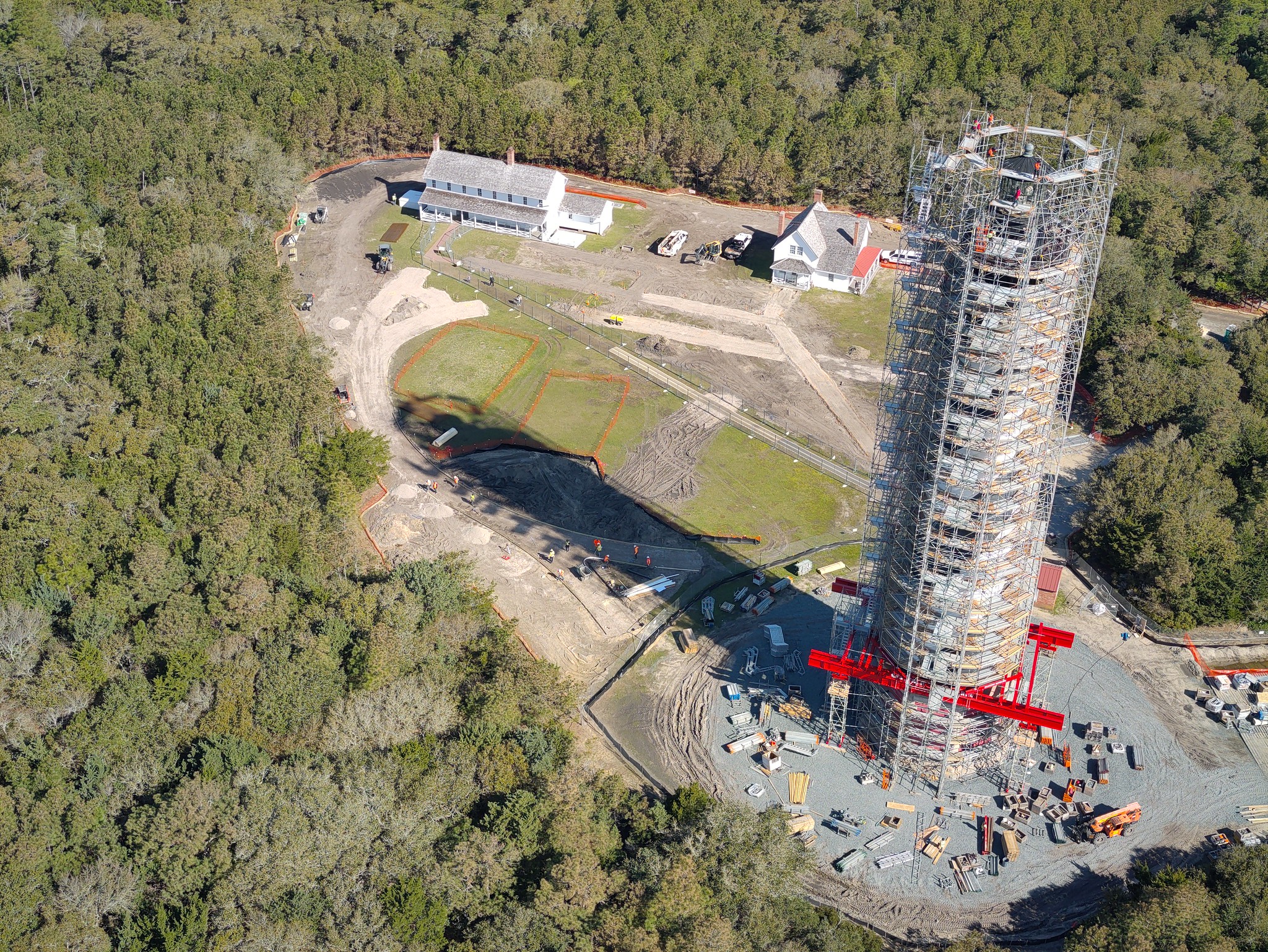
The exterior is going to get a complete cleaning, resealing, and new paint—and that in itself is a major undertaking. Removing the years of layers of paint requires specialized techniques. In this case, it seems to be ground-up walnut shells that are sprayed on the old paint, peeling it off one layer at a time—environmentally friendly and relatively gentle on the surface being treated.
It should also be noted that a lot of that paint is lead-based and takes special handling.
Although the outside is where the most apparent work is happening, what’s happening inside the tower may be the most exciting part of the restoration.
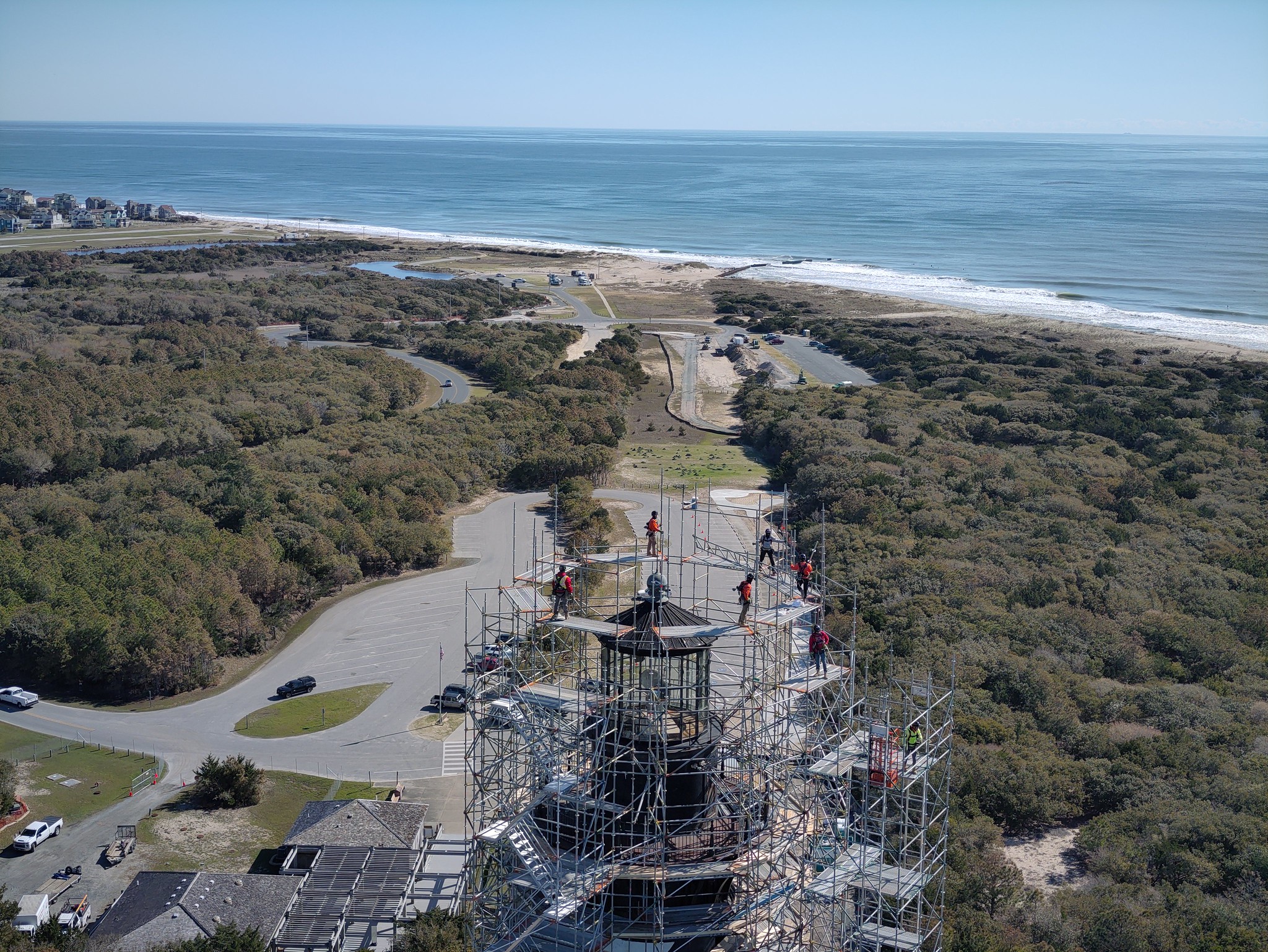
When everything is ready to go again, a first order Fresnel lens will once again be shining a beam out to sea. The new lens, which will be visually an exact replica of the original, is being fabricated by Artworks Florida, a Florida company that specializes in period piece reproductions.
For years—since 1949, when the Coast Guard removed the first order Fresnel Lens—the light has been a powerful electronic beam—or, more simply, a really, really powerful lightbulb.
There will be some variation from the original. The lens will be acrylic, not glass, and the colors of the light will be slightly different. That’s being dictated by the Coast Guard, which maintains all the nation’s lighthouses, and they have very specific requirements for the color of the light. At the core of the lens, there will still be a halogen light—the days of oil lamps are long gone.
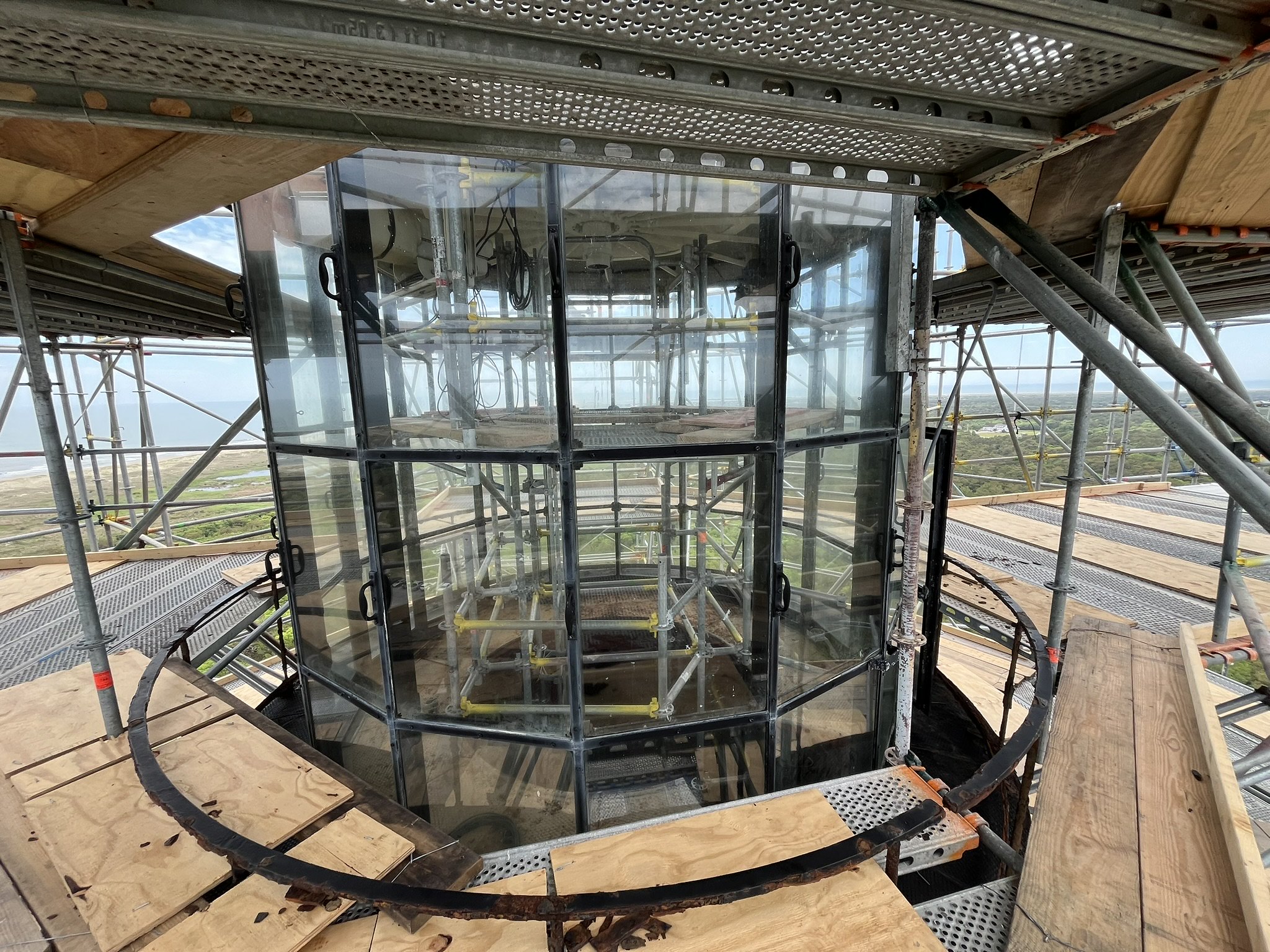
The stairs leading to the top will also be extensively refurbished, and they need it. Inspections found rust and signs of structural weakness—not unexpected, given that a few thousand people climb to the top every year. The new stairs will be stronger and significantly more resilient.
Although the lighthouse with scaffolding completely enclosing it is what is immediately seen, extensive improvements are also being made to the grounds and outbuildings.
According to National Park Service officials, one problem with the way the grounds were originally laid out is that there has been no clear path to cross them from the double keeper’s quarters—the building that once housed the lighthouse keepers and their families. The building is now the site’s Museum of the Sea.
To preserve the grounds and improve appearance, the NPS wanted to plant grass in the area between the museum and the lighthouse. The problem they encountered, though, was that the paths were four feet wide and much too narrow for the volume of people visiting—between 50,000 and 100,000 annually—so people simply didn’t use the paths and walked across the infield, making it very difficult to grow anything.
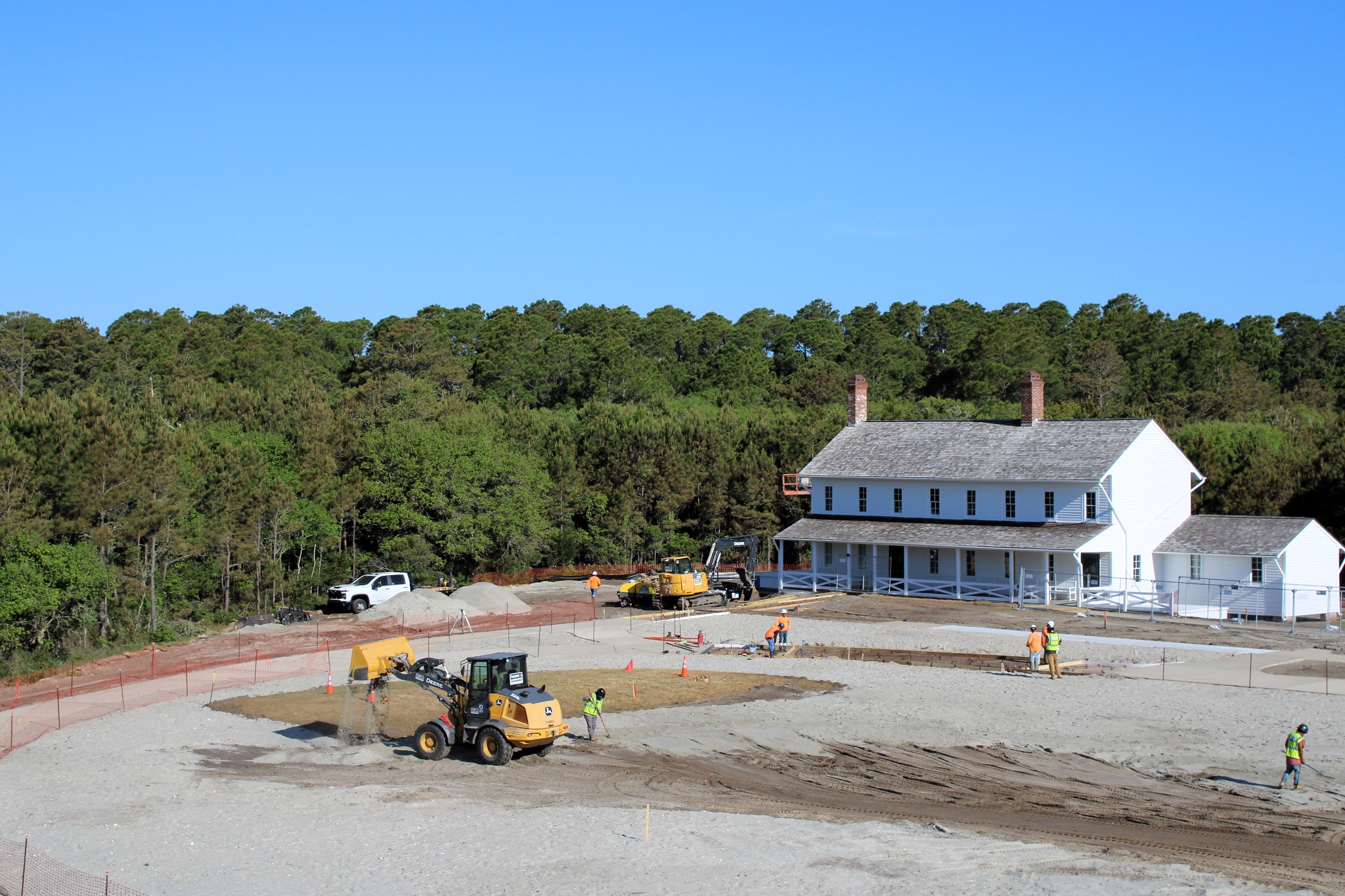
The redesign will feature seven-foot paths that curve around the infield, creating more space for people to walk.
There are also going to be some retrofits—going back to what the grounds looked like in 1870. There will be a white picket fence around the keepers’ buildings, and the Lighthouse itself will feature a cast iron fence with a bit of a spear point that historically would have been found at the lighthouse in the 1870s.
The restoration is a little more than six months into the work that has to be done. If things continue on schedule, Cape Hatteras Lighthouse should be reopening by the summer of 2025. Of course, weather and other factors can affect that, but that’s where the schedule is right now.
(Photos courtesy of the National Park Service. For more information, visit https://www.nps.gov/caha/learn/news/cape-hatteras-lighthouse-restoration-project.htm)
